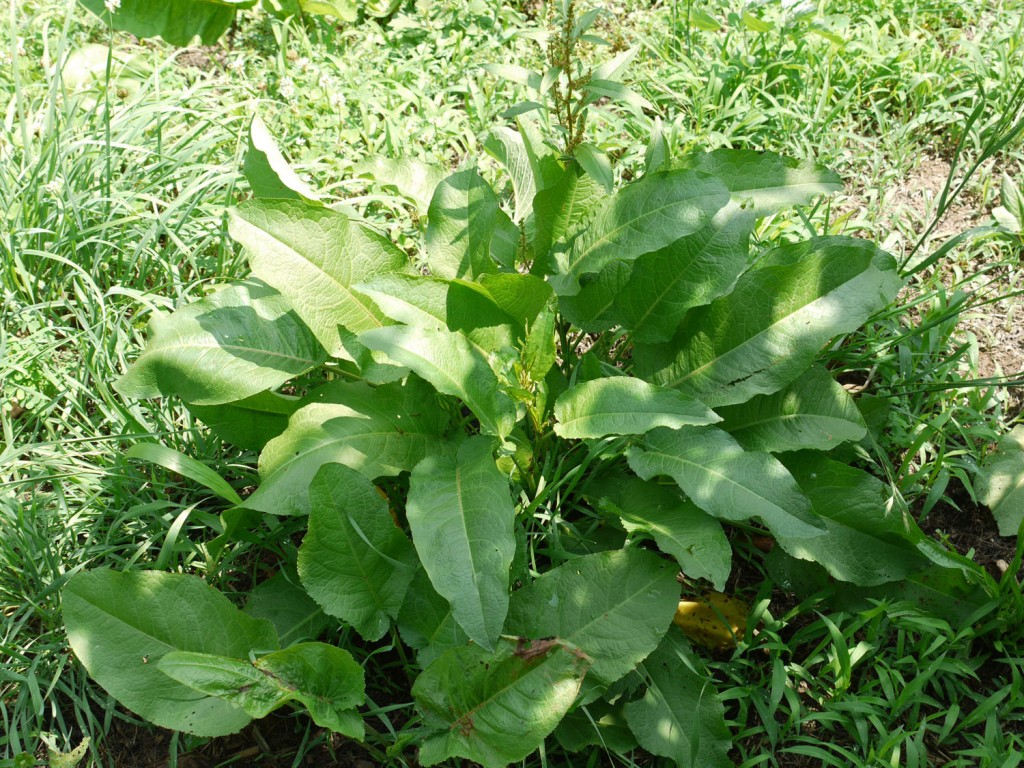Dock leaves are a common sight in many backyards and wild areas. Their large, distinctive leaves often have wavy or curly edges. But are these leaves safe for human consumption? Let’s explore the potential risks of eating dock leaves.
What is Dock?
There are several species of dock but two of the most prevalent are
- Curly dock (Rumex crispus) Named for its trademark ruffled edges on leaves Matures to reddish-brown seed stalks
- Broadleaf dock (Rumex obtusifolius) Features broad oval leaves without ruffled edges. Has green seed stalks that turn reddish-brown.
Both can reach 3-5 feet tall at maturity. They spread readily and are considered weeds in some regions. Young leaves may be eaten cooked, but potential toxicity has stoked controversy over dock’s edibility.
Active Compounds in Dock Leaves
The main compound dock contains that raises toxicity concerns is oxalic acid. All parts of the dock plant have varying concentrations, with higher amounts in mature leaves and seeds.
Dock also contains tannins, believed to cause stomach upset. Anthraquinones act as laxatives and irritate kidneys.
These compounds impart a tart, bitter taste and exist to deter herbivores from over-consuming the plant. But what do they mean for human consumption?
Is Oxalic Acid in Dock Leaves Toxic?
Oxalic acid binds to minerals like calcium, iron, and magnesium in the digestive tract, preventing their absorption. Very high intake can cause serious mineral deficiencies. It also contributes to kidney stone development.
However, dock leaves contain far lower oxalate levels than many common vegetables. For reference:
- Curly dock leaves: 750-900 mg oxalate per 100 grams
- Spinach: 750 mg per 100 grams
- Rhubarb leaves: 500-1200 mg per 100 grams
- Beet greens: 800 mg per 100 grams
So in moderation, dock leaves present similar risks as other leafy greens. Very large, frequent consumption could potentially cause problems in those predisposed to kidney stones or with underlying mineral deficiencies.
Groups at Highest Risk from Dock Leaf Toxicity
Children
Young children are more susceptible to toxins due to smaller body size and developing systems. Mineral deficiencies can impair growth and development.
Dock’s laxative effect also poses a hazard to little bodies. Diarrhea and electrolyte imbalances can become medically dangerous for toddlers and babies.
Pregnant Women
Pregnancy stresses mineral reserves like calcium. Consumption of high-oxalate dock leaves could deplete calcium levels needed for proper fetal development.
Dehydration and electrolyte disturbances from diarrhea also carry health risks during pregnancy. Caution is warranted with dock leaves.
Individuals with Kidney Issues
Those with chronic kidney disease or a history of kidney stones face higher consequences from the oxalic acid and anthraquinones in dock leaves. Damaging mineral deposits and electrolyte imbalances are key concerns.
Signs of Dock Leaf Poisoning
Adverse symptoms from ingesting toxic amounts of dock leaves can include:
- Nausea, vomiting, cramping, diarrhea
- Dehydration
- Dizziness, tremors, seizures
- Difficulty breathing
- Irregular heartbeat
- Kidney pain or dysfunction
Seek medical care immediately if any severe symptoms appear after someone consumes dock leaves. For any amount ingested, call poison control at 800-222-1222 for guidance.
Safe Consumption of Dock Leaves
- Pick young, tender leaves early in spring. Older leaves concentrate more oxalates.
- Eat dock leaves in moderation as an occasional wild edible or potherb, not daily.
- Boil dock leaves in multiple changes of water to help reduce oxalates.
- Avoid giving dock leaves to children. Supervise children outdoors where dock grows.
- Pregnant/nursing women and those with kidney issues should avoid dock leaves.
- Know foraging safety. Only collect where pollution and pesticide exposure are unlikely.
- Properly identify dock leaves. Similar plants like foxglove are highly poisonous. When in doubt, leave it out!
Dock leaves do contain anti-inflammatory and astringent compounds that can provide benefit when prepared properly. But their risks outweigh potential usefulness for many groups. For safety’s sake, dock is often best appreciated for its hardiness and habitat value, not its edibility.
Why Curly Dock Isn’t a Salad Ingredient
Despite its availability, Curly Dock is not a salad green. It contains oxalic acid, which in large quantities can lock up nutrients in your digestive system. This acid gives food a sour taste, but it can be dangerous, especially for kids, pregnant women, and people with certain health problems. Some people gather Curly Dock in the wild and cook it, but it’s important to pick the young, tender leaves and cook them correctly to lower the amount of oxalic acid they contain. On the other hand, it’s best for the average parent to play it safe and keep Curly Dock off the plate.
Parental Guide to Poison Prevention
Kids are natural explorers—curiosity is their game. To keep them safe, make plant education a family affair. Start young, teaching them that not all green is good. Role-play scenarios where they encounter unknown plants, and practice saying “No touch, just look. “Use real-life examples to help the lessons stick, like showing Curly Dock to your dog on a walk and telling them why they shouldn’t touch him.
The Truth about Yellow Dock
FAQ
Can humans eat dock leaves?
Are dock plants poisonous?
What are the benefits of dock leaves?
What part of dock is edible?
- The Ultimate Guide to Growing Strawberries in Raised Beds - August 8, 2025
- No-Dig Garden Beds: The Easiest Way to Grow a Beautiful Garden - August 6, 2025
- How to Protect and Preserve Wood for Raised Garden Beds - August 6, 2025

